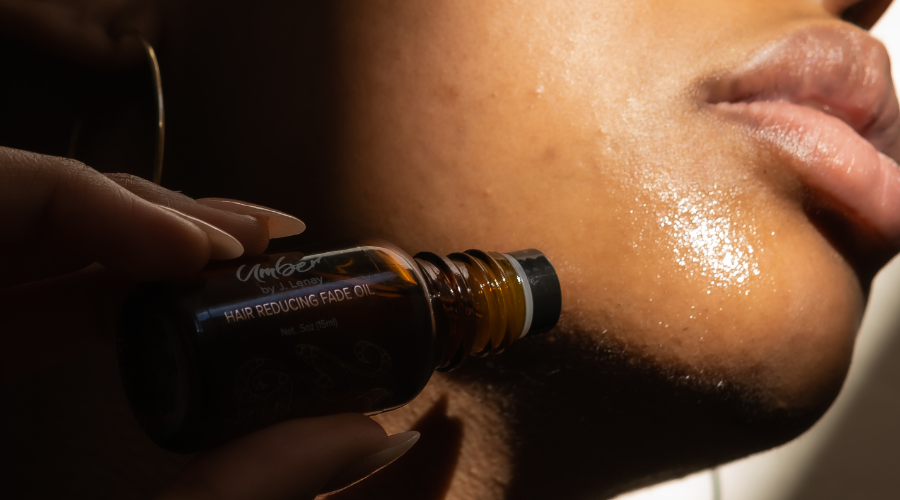Natural Alternatives for Hirsutism Management: Unveiling Gentle Yet Effective Options with Hair Reduction Oil

You've been dealing with excessive hair growth in all the wrong places, and you're over it. No matter how many times you shave, wax, or pluck, the hair keeps coming back thicker and darker than before. You've tried every hair removal trick in the book, but nothing seems to provide long-lasting relief. Before you resort to expensive and painful laser treatments, it's worth exploring natural alternatives that can help tame hirsutism.
In this article, we'll discuss gentle yet surprisingly effective options like hair reduction oils that can help you achieve smooth, hair-free skin without harsh chemicals or medications. You'll learn why these plant-based oils are gaining popularity as natural solutions for unwanted body and facial hair, along with tips for incorporating them into your self-care routine. With the right natural hair reduction products, you can finally say goodbye to stubborn hairs and hello to silky soft skin!
Understanding Hirsutism: Causes and Symptoms
Hormonal Imbalance
Excessive hair growth in women is often caused by higher-than-normal levels of androgens like testosterone. Polycystic ovary syndrome is a common hormonal disorder that can lead to hirsutism, causing irregular periods, acne, and weight gain in addition to unwanted hair growth.
Genetics
Hirsutism can also run in families. If your mother or sisters have hirsutism or a condition like PCOS, you may be genetically predisposed to developing it yourself. Genetics accounts for about 50-70% of the risk for hirsutism.
Medications
Certain medications like danazol, used to treat endometriosis, or steroids can trigger hirsutism or make existing symptoms worse as a side effect. If you're on any long-term medication, check with your doctor to see if it could be contributing to your excess hair growth.
The most common signs of hirsutism include coarse, dark hair on the face, chest, back, abdomen, and buttocks. The hair growth tends to follow a male pattern, often described as looking similar to adolescent boys going through puberty. Not all excess body hair in women qualifies as hirsutism, though. For a diagnosis of hirsutism, the excess hair growth should appear in a male-like pattern, be coarse and pigmented, and be bothersome or distressing to you. If you notice these symptoms and suspect you may have hirsutism, consult your doctor. They can check your hormone levels and determine the underlying cause so you can get the appropriate treatment.
Drawbacks of Conventional Hirsutism Treatments
Physical Side Effects
Conventional hirsutism treatments like laser hair removal and electrolysis often come with undesirable physical side effects. Laser treatment, for example, can cause redness, swelling, and irritation in the treated area. Electrolysis involves inserting a needle into each hair follicle which frequently leads to pain, scabbing, and potential scarring. These effects may seem minor but can significantly impact your daily comfort and confidence.
Hormonal Imbalance
Some prescription drugs for hirsutism like spironolactone work by manipulating your hormone levels. While effective at reducing unwanted hair growth,hormone-based treatments can disrupt your body’s natural balance and lead to irregular periods, weight gain, nausea, and fatigue. For many, the risks outweigh the benefits.
Repeat Treatments Required
Neither laser hair removal nor electrolysis provide permanent hair loss after a single treatment. Multiple sessions are typically needed to achieve desired results which requires a serious time and financial commitment. The hair loss may not even be lifelong, with regrowth possible months or years later requiring further investment to maintain.
Limited Candidacy
Finally, not all people with hirsutism qualify for medical interventions. Factors like skin tone, hair color, and medical conditions can restrict eligibility for laser hair removal, electrolysis or prescription drugs. If you have been told conventional treatment isn’t right for you, natural alternatives may be your best option.

Introducing Natural Hair Reduction Oils as an Alternative
If you're looking for a natural solution for managing unwanted facial hair, essential oils can be a gentle yet effective option. Certain plant oils contain compounds that may help reduce hair growth over time with regular use. Unlike harsh chemicals, these natural oils are non-toxic and moisturize the skin.
Hair Reduction Fade Oil
Embarking on the journey to smoother, less stubbly skin, hair reduction fade oils have emerged as a sought-after ally in the beauty arsenal. These oils work not just to soften and nourish the skin but also contain ingredients that can help to minimize hair regrowth over time.
Infused with natural extracts, they double as a luxurious skin treatment that can slow down the enzymatic processes responsible for hair growth. With consistent use, hair reduction fade oils can lessen the frequency of hair removal sessions, making each strand appear finer and easier to manage. They are a game-changer for anyone looking to streamline their personal grooming routine while indulging in a bit of daily pampering. Whether it's part of your post-shaving ritual or a soothing end to a long day, incorporating a hair reduction fade oil can lead to softer skin and diminished hair.
How to Use Hair Reduction Oils for Best Results
Apply Consistently
For the hair reduction oil to work its magic, you need to apply it regularly and consistently. Aim for at least 2 times a day, especially when you’re just starting out. Pick days that work with your routine and stick to them. The oil works by stunting hair growth over time, so missing applications can slow your progress.
Massage Thoroughly
When applying the oil, take your time to massage it into the areas you want to target. Use gentle, circular motions to work the oil into the hair follicles. Massaging also helps increase blood flow to the area which aids in absorption. Spend at least 5-10 minutes massaging on each treatment area.
Exfoliate Regularly
Exfoliation removes dead skin cells from the surface of the skin and clears blocked hair follicles. This allows hair reduction oils and their ingredients to better absorb into the follicles. Use a scrub, loofah, or dry brush 2-3 times a week to exfoliate areas you’re treating. Gently massage the exfoliant onto the skin using small circular motions and then rinse well. Your hair reduction oil will be even more effective with regular exfoliation.
With consistent use and by following these tips, a high-quality hair reduction oil can significantly lessen unwanted body hair over 2-4 months. Be patient and diligent, and you’ll start seeing smoother skin in no time.

FAQs About Hair Reduction Oils
What is hair growth oil?
Hair reduction oils are natural blends of carrier and essential oils that work to slow down hair growth and reduce hair density over time with regular use. The oils penetrate the hair follicles to inhibit hair growth and may help thin out unwanted hair. These gentle, botanical formulas offer an alternative to harsh hair removal methods.
How do hair reduction oils work?
The oils contain natural ingredients that help slow hair growth. Essential oils like lavender, rosemary, and peppermint are popular for hair reduction. They are thought to inhibit hair growth when applied directly to the skin. Carrier oils provide a base and help the essential oils absorb better. It may take 6-12 weeks of regular use to notice a reduction in hair growth and density. Results vary from person to person based on factors like hair type, hormone levels, and dosage used.
Are there any side effects?
When used as directed, natural hair reduction oils are generally considered safe with minimal risk of side effects. However, some people may experience skin irritation from the essential oils. Do a patch test on your inner arm before using the oil on larger areas. Discontinue use if you experience redness, itching, or other signs of sensitivity. The oils have a strong herbal aroma that some may find unpleasant. Use in a well-ventilated area and wash hands thoroughly after applying.
How long do the results last?
Hair reduction oils provide gradual, long-term results with continued use. Once you achieve your desired reduction in hair growth, you can cut back to a maintenance dosage to sustain the results. However, as with any hair removal method, some regrowth will occur over time due to the natural hair growth cycle. You may need touch-up treatments to maintain smooth, hair-free skin. The oils are a safe, gentle option you can use long-term as needed.
With diligent use of natural alternatives like hair reduction oils, you can gently and effectively manage unwanted hair growth from hirsutism. It may take time and consistency, but these botanical solutions can help you gradually reduce hair density without harsh chemicals or painful procedures. Be patient, do your research, and find the right natural hair inhibitors for your body.





Umber By J. Lenay -
Hildah – head to the “shop products” tab at the top of the screen. Our hair reduction fade oil will be the first product listed!
Umber By J. Lenay -
Tasekeen – We recommend our hair reduction fade oil.
Tasekeen khan -
I have hair on chin and upper lip